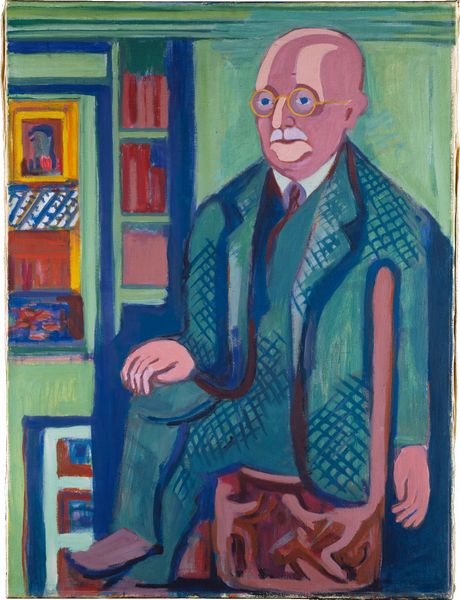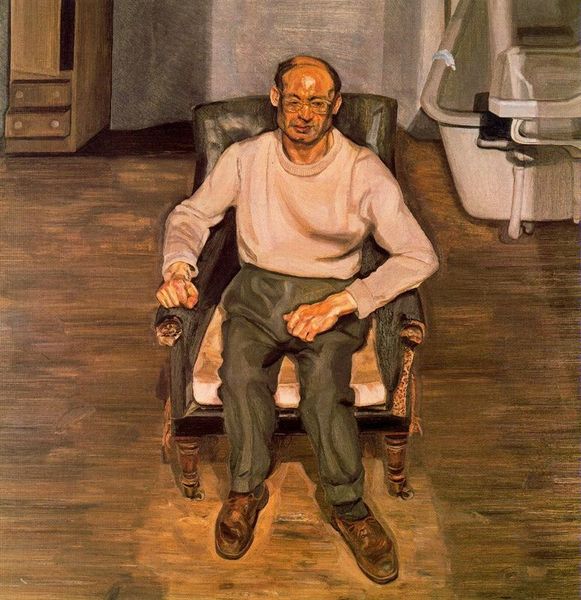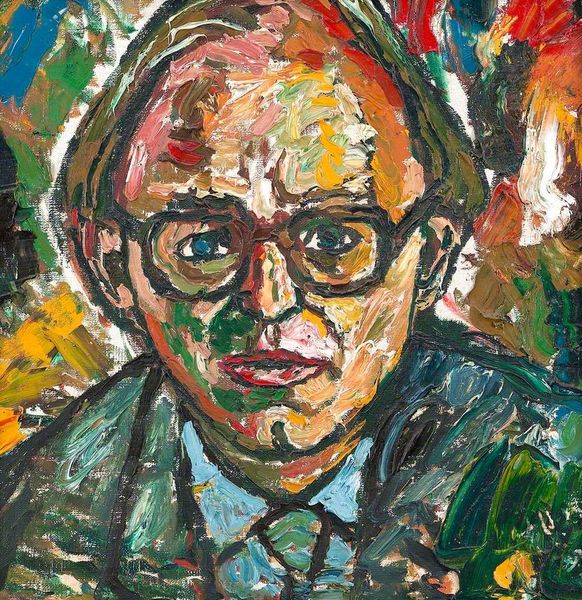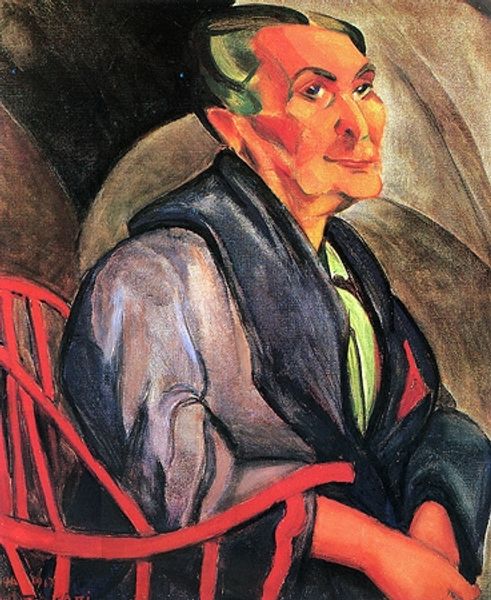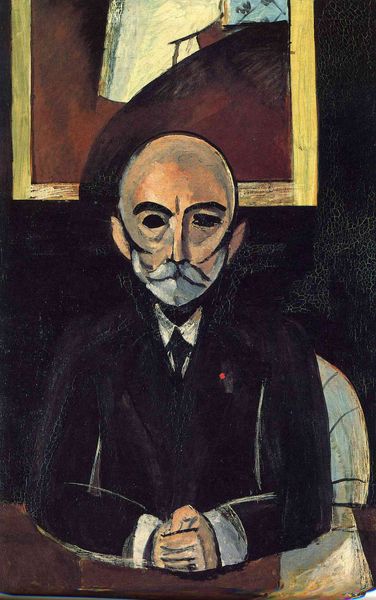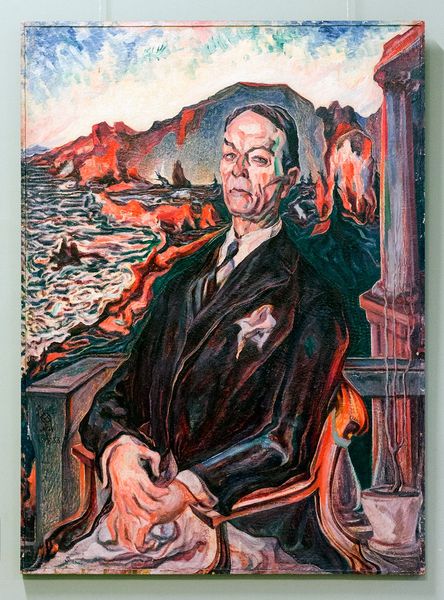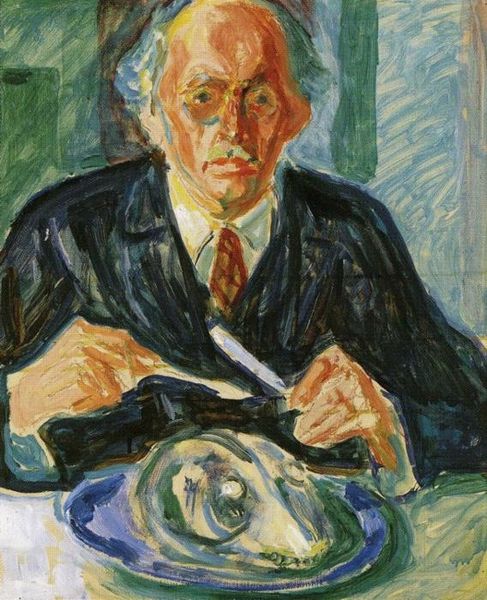
Dimensions: 84 x 107.5 cm
Copyright: Public domain
Curator: The oil painting "By the Window," created in 1940, offers an introspective moment with Edvard Munch. Editor: Immediately striking is the tension between the figure's harsh reds and the cold greys of the winter landscape seen through the window; almost like two contrasting moods clashing within a single canvas. Curator: Precisely. Observe how the structural interplay between interior and exterior is vital; the window becomes a framing device, heightening the sitter’s, indeed Munch's own sense of confinement and the expressive possibilities. Editor: Thinking about it, look closely, the window itself feels hastily rendered, the paint application so raw— you see how Munch's deliberate, material approach heightens the visual tension between nature, artifice and self. He uses paint almost sculpting mood. Curator: True, his materiality enhances the psychological density. Munch is masterfully articulating what is fundamentally a study in form, an orchestration of line and color to render affect. The stern verticality, offset by swirling gestures near the sill— it’s all carefully calibrated. Editor: Absolutely. But also consider the socio-political context here – 1940, Norway occupied, Munch grappling with failing health; aren't these visible in that restricted palette? In the material weight of the brushstrokes that make you feel that weight he was probably going through? Curator: Undeniably. While such context provides compelling interpretation, it is primarily through the formal structure – the dissonant color pairings, the figure dominating pictorial space—that one truly apprehends the underlying anxieties and mood conveyed within Munch’s vision. Editor: I agree about his vision. For me, the rawness, the sheer process of applying paint that powerfully reflects not just Munch’s internal world, but also material world—art supplies becoming instruments that gave birth to his emotional resonance. Curator: His deliberate formal constructions yield complex understandings about his personal expression during historical strife. It reveals aspects of visuality in expressionistic form. Editor: The paint, his struggles, his time, merge and show that in his materiality lay truth, beauty, and anguish.
Comments
No comments
Be the first to comment and join the conversation on the ultimate creative platform.

